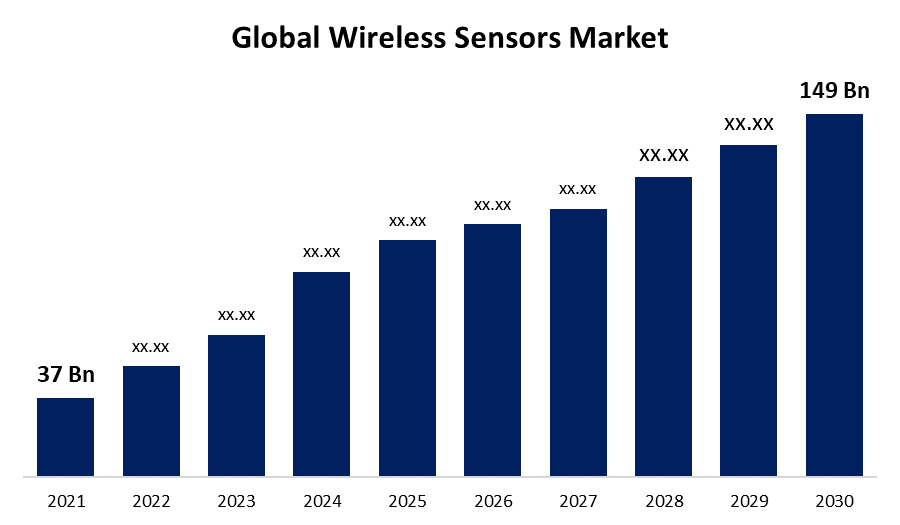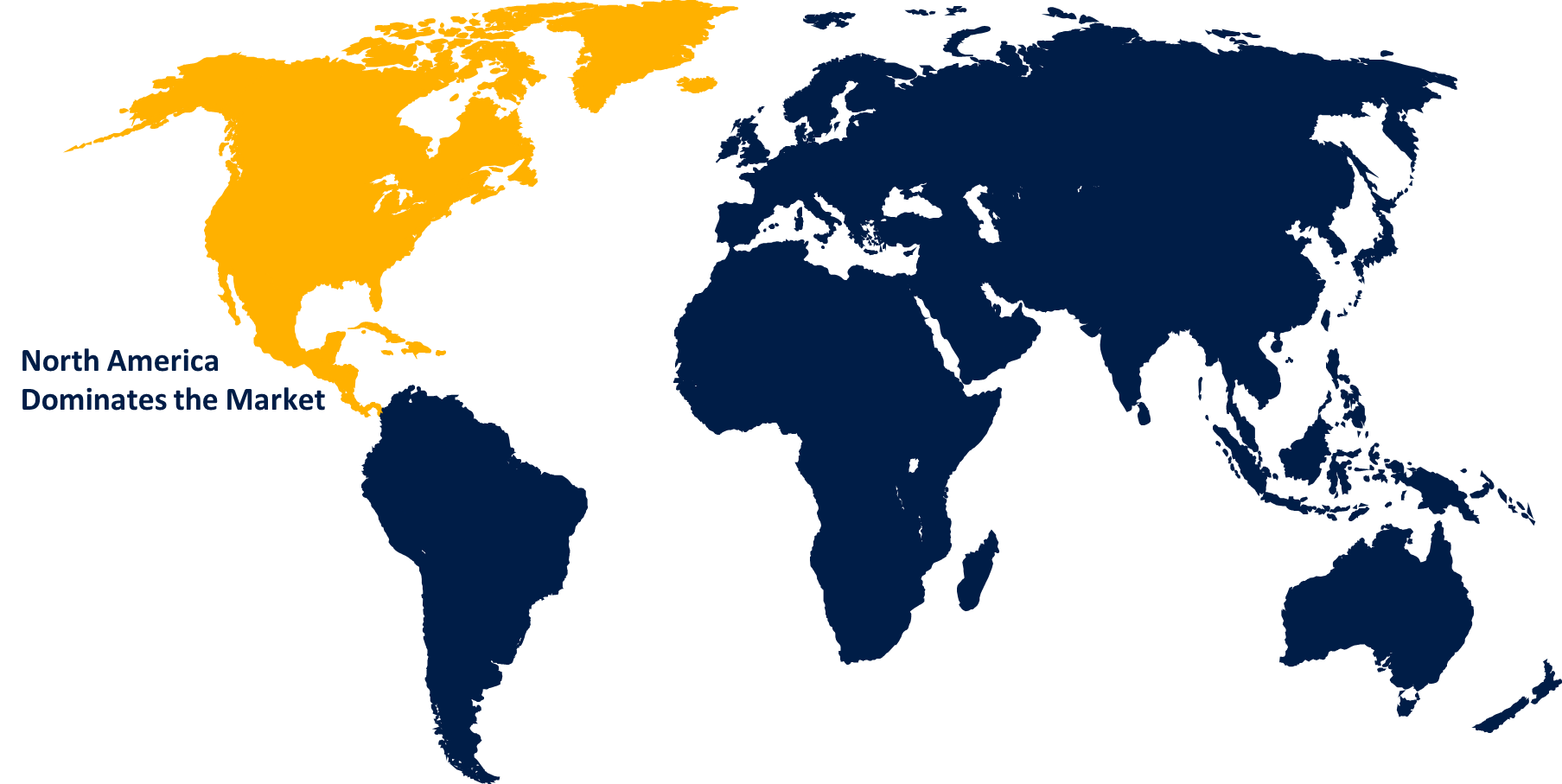Global Wireless Sensors Market Size to grow USD 149 Billion by 2030 | CAGR of 19%
Category: Semiconductors & ElectronicsGlobal Wireless Sensors Market worth $149 billion by 2030

Get more details on this report -
According to a research report published by Spherical Insights & Consulting, the Global Wireless Sensors Market Size to grow from USD 37 billion in 2021 to USD 149 billion by 2030, at a Compound Annual Growth Rate (CAGR) of 19% during the forecast period.
Browse key industry insights spread across 220 pages with 119 market data tables and figures & charts from the report “Global Wireless Sensors Market Size, Share, and COVID-19 Impact Analysis, By Component (Hardware, Software, Services), By Connectivity Type (Bluetooth, Wireless Fidelity (Wi-Fi), Wireless Highway Addressable Remote Transducer (WHART), Cellular Network, Global Navigation Satellite System (GNSS) Module, and Bluetooth Smart/Bluetooth Low Energy (BLE)), By Sensor Type (CMOS based sensors, MEMS sensors, LED sensors, motion and position sensors, flow sensors, others), By Application (industrial automation, home building and automation, smart transportation, military surveillance, machine monitoring, patient monitoring, others), By End User (Building Automation Banking, Financial Services, and Insurance (BFSI), Industrial, Wearable Devices, Healthcare, Retail, Others), by Region (North America, Europe, Asia-Pacific, Latin America, Middle East, and Africa), Analysis and Forecast 2021 – 2030 “in detail along with the table of contents. https://www.sphericalinsights.com/reports/wireless-sensors-market
In order to detect physical or environmental conditions like temperature, pressure, motion, sound, vibration, or pollution, a wireless sensor network must be self-configured and devoid of infrastructure. Sensor nodes with an embedded CPU are used in wireless sensor networks to control and monitor the immediate environment. They are linked to the base station, which acts as the system's central processing unit for wireless sensor networks. In a wireless sensor network, a sensor node's processing speed, storage capacity, and transmission bandwidth are all predetermined by design. The increased use of wireless sensors is driving the market's growth. Since it allows businesses to remotely manage and monitor a range of properties, including temperature, vibration, pressure, and others while also saving a tonne of time, industrial wireless sensor technology has grown in popularity. In addition, there is a growing need for low-cost industrial automation solutions, including industrial wireless sensors, as the need to optimise process efficiency and achieve corporate financial goals grows. As opposed to traditional wired industrial monitoring and control systems, these systems also have a number of advantages, such as speedy construction, adaptability, self-organization, and intelligent processing. Concerns about data security and privacy are preventing business growth. The method of controlling and monitoring has altered as a result of industrial wireless sensors, which can remotely operate, troubleshoot, and monitor a variety of parameters, including temperature, vibration, pressure, and others.
The Hardware Segment dominates the market with the largest market share.
Based on the component, the global wireless sensors market is segmented into hardware, software, services. Due to the growing use of gateways, sensor nodes, and routers to build robust network infrastructure, the hardware segment holds the biggest market share among these. In addition, the growing use of linked devices and IoT across a variety of industrial applications is promoting category growth. Additionally, hardware installation makes data integration simple.
WHART segment is witnessing the fastest market growth over the forecast period.
On the basis of Connectivity Type, the global wireless sensors market is segmented into Bluetooth, Wireless Fidelity (Wi-Fi), Wireless Highway Addressable Remote Transducer (WHART), Cellular Network, Global Navigation Satellite System (GNSS) Module, and Bluetooth Smart/Bluetooth Low Energy (BLE). The WHART category dominated the market due to its benefits, which include offering a user-friendly environment while retaining interoperability with current devices, tools, and systems. Process measuring and monitoring can also be accomplished using WHART, a well-liked open wireless communication technology.
Motion and Position Sensor segment holds the highest market share over the forecast period.
Based on the sensor type, the global wireless sensors market is segmented into CMOS based sensors, MEMS sensors, LED sensors, motion and position sensors, flow sensors, others. Since it is frequently used to determine an object's rotating position while utilising a variety of sensing technologies, the motion and position sensor segment is leading the market with the greatest market share over the forecast period.
Home Building and Automation segment is dominating the market over the forecast period.
On the basis of application, the global wireless sensors market is segmented into industrial automation, home building and automation, smart transportation, military surveillance, machine monitoring, patient monitoring, others. Due to the rising use of wifi for home automation applications via wireless connections, which will drive market expansion, the house building and automation category is expected to dominate the market over the forecast period.
- Healthcare segment holds the largest market share over the forecast period.
Based on the end user, the global wireless sensors market is segmented into Building Automation Banking, Financial Services, and Insurance (BFSI), Industrial, Wearable Devices, Healthcare, Retail, and others. The healthcare industry maintains a significant share of the market as a result of wireless sensor networks' critical role in the creation of new technologies that enable patient monitoring, diagnosis, and therapy. The demand for medical devices that can monitor daily activities and capture important data through sensors in emergency rooms is projected to rise as healthcare systems develop.
North America is dominating the market with the largest market share over the forecast period.
The growing demand for better lifestyles and more R&D in the IoT arena are two major factors propelling the growth of the wireless sensor network market in North America. In addition, more R&D is being done at both the academic and industrial levels, which is expanding the spectrum of IoT applications in sectors including healthcare, retail, automotive and transportation, and building automation.

Get more details on this report -
Major vendors in the Global Wireless Sensors Market include Intel Corporation, Huawei Investment & Holding Co., Ltd., Dell Incorporation, Texas Instruments Inc., Cisco Systems Inc., Hewlett Packard Enterprise Co., NXP Semiconductors N.V., STMicroelectronics N.V., TE Connectivity Ltd., Advantech Co., Ltd., ABB, Honeywell International Inc., Broadcom, Bosch Connected Devices and Solutions GmbH, EUROTECH, InvenSense, Infineon Technologies AG, Analog Devices, Inc., Emerson Electric Co., Sensirion AG, Nordic Semiconductor, MediaTek Inc.
Market Segment
This study forecasts revenue at global, regional, and country levels from 2021 to 2030. Spherical Insights has segmented the global Wireless Sensors market based on the below-mentioned segments:
Wireless Sensors Market, By Component
- Hardware
- Software
- Services
Wireless Sensors Market, By Connectivity Type
- Bluetooth, Wireless Fidelity (Wi-Fi)
- Wireless Highway Addressable Remote Transducer (WHART)
- Cellular Network
- Global Navigation Satellite System (GNSS) Module
- Bluetooth Smart/Bluetooth Low Energy (BLE)
Wireless Sensors Market, By Sensor Type
- CMOS based sensors
- MEMS sensors
- LED sensors
- Motion and position sensors
- Flow sensors
- Others
Wireless Sensors Market, By Application
- Industrial automation
- Home building and automation
- Smart transportation
- Military surveillance
- Machine monitoring
- Patient monitoring
- Others
Wireless Sensors Market, By End User
- Building Automation
- Banking, Financial Services, and Insurance (BFSI)
- Industrial
- Wearable Devices
- Healthcare
- Retail
- Others
Wireless Sensors Market, Regional Analysis
- North America
- US
- Canada
- Mexico
- Europe
- Germany
- Uk
- France
- Italy
- Spain
- Russia
- Rest of Europe
- Asia Pacific
- China
- Japan
- India
- South Korea
- Australia
- Rest of Asia Pacific
- South America
- Brazil
- Argentina
- Rest of South America
- Middle East & Africa
- UAE
- Saudi Arabia
- Qatar
- South Africa
- Rest of Middle East & Africa
Related Report:
Global Robot Sensor Market Size, Share Analysis Forecast 2030
Global Ultrasonic Sensors Market Size, Growth Research Report By 2030
About the Spherical Insights & Consulting
Spherical Insights & Consulting is a market research and consulting firm which provides actionable market research study, quantitative forecasting and trends analysis provides forward-looking insight especially designed for decision makers and aids ROI.
Which is catering to different industry such as financial sectors, industrial sectors, government organizations, universities, non-profits and corporations. The company's mission is to work with businesses to achieve business objectives and maintain strategic improvements.
CONTACT US:
For More Information on Your Target Market, Please Contact Us Below:
Phone: +1 303 800 4326 (the U.S.)
Phone: +91 90289 24100 (APAC)
Email: inquiry@sphericalinsights.com, sales@sphericalinsights.com
Contact Us: https://www.sphericalinsights.com/contact-us
Need help to buy this report?